Berkay Buğdan
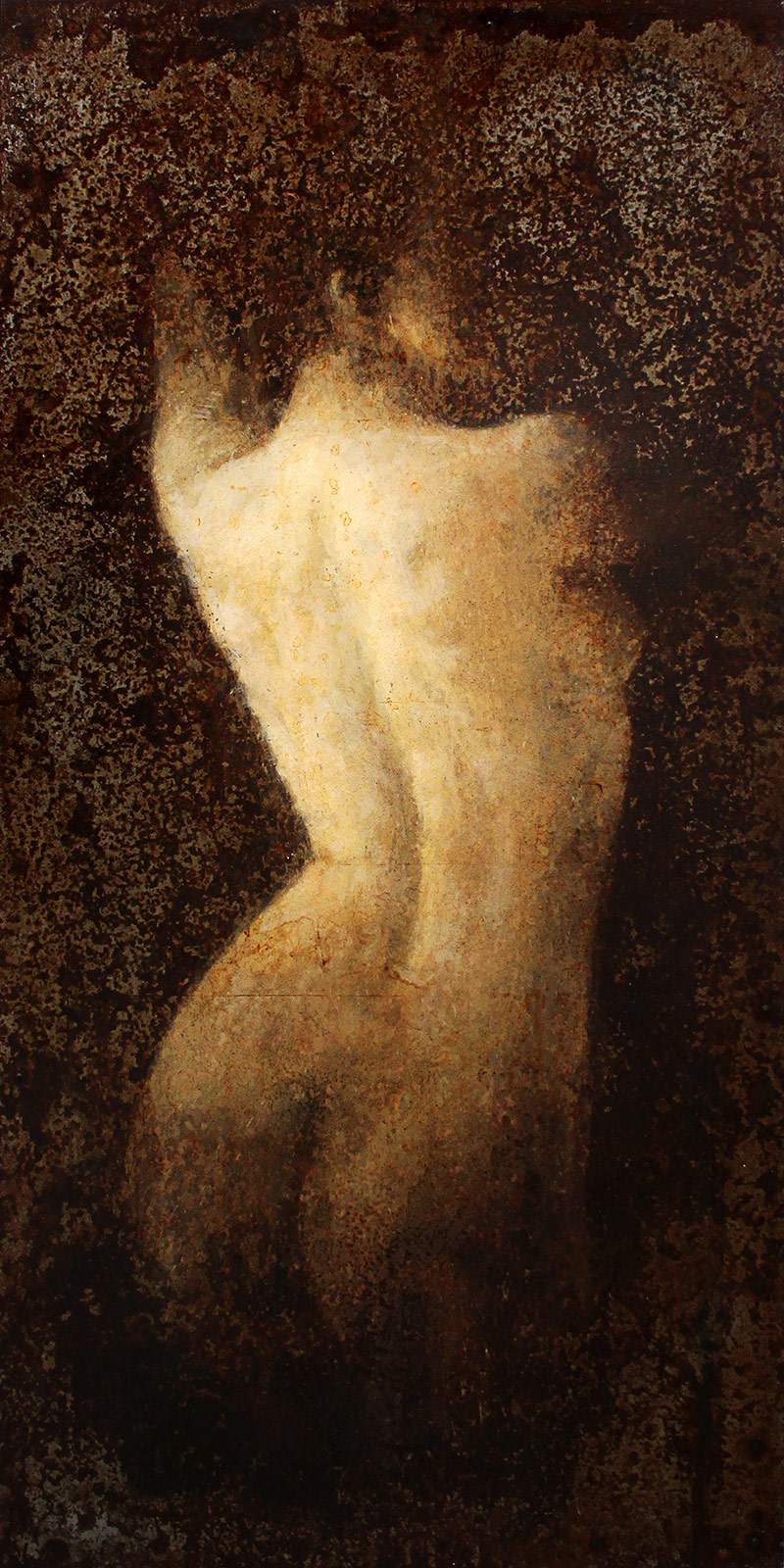
Dear John C. - III (Sevgili John C. - III), 2017

Farewell (Elveda), 2018
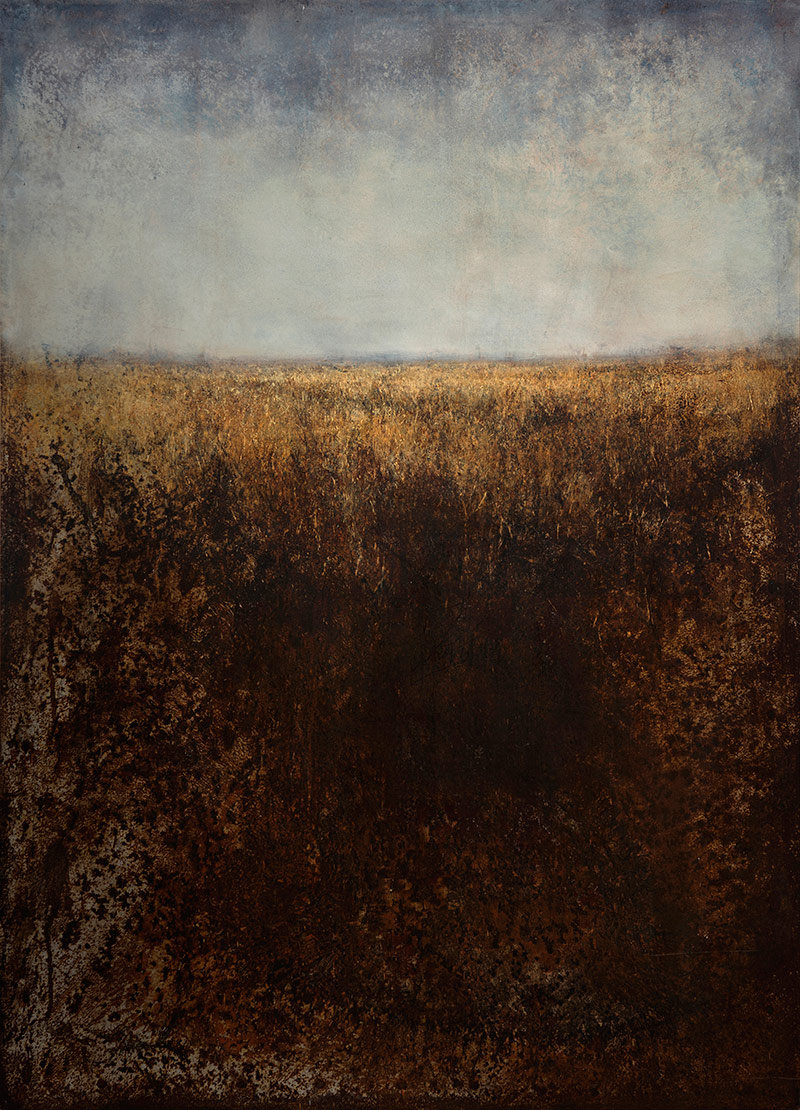
Oba II, 2017

Oba III, 2017
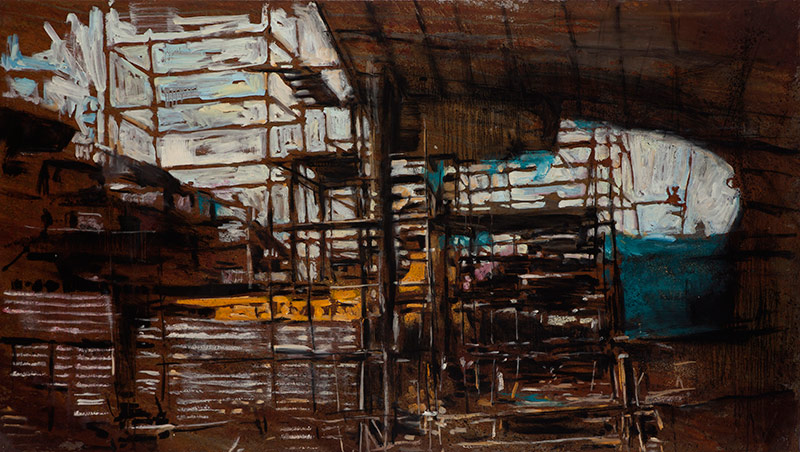
Steer, 2012
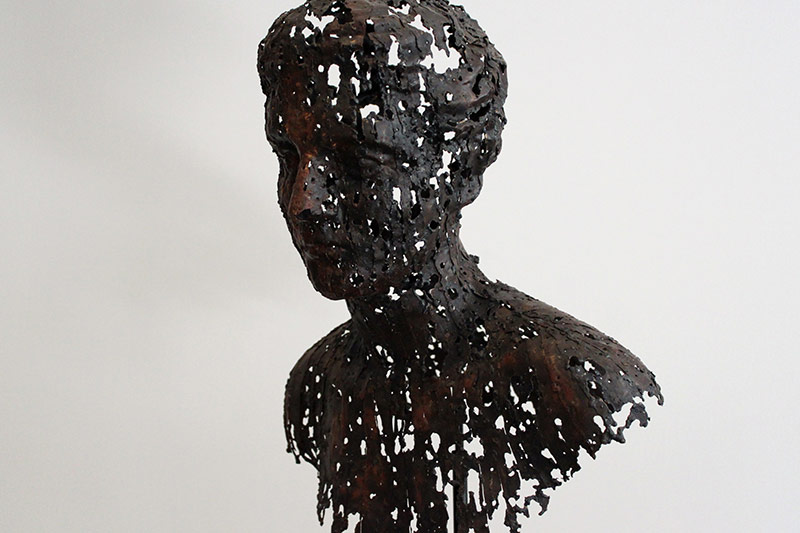
Left (Artık), 2017
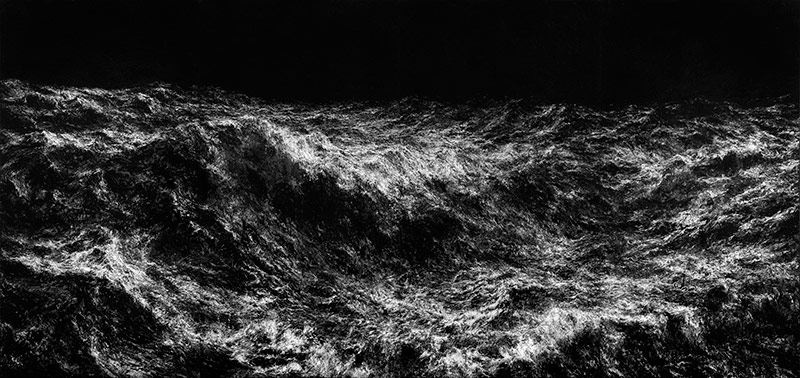
Crash, Composite 2017 (Çarpışma, Kompozit 2017), 2017
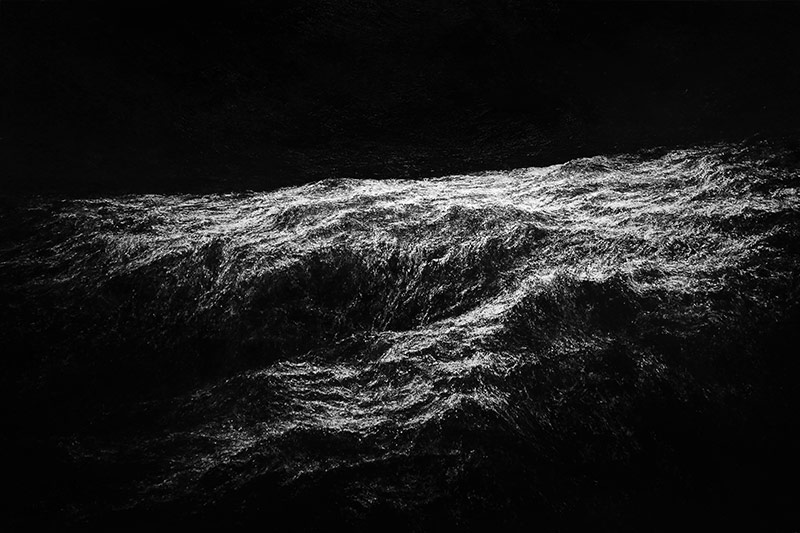
Crash 2018 (Çarpışma 2018), 2019
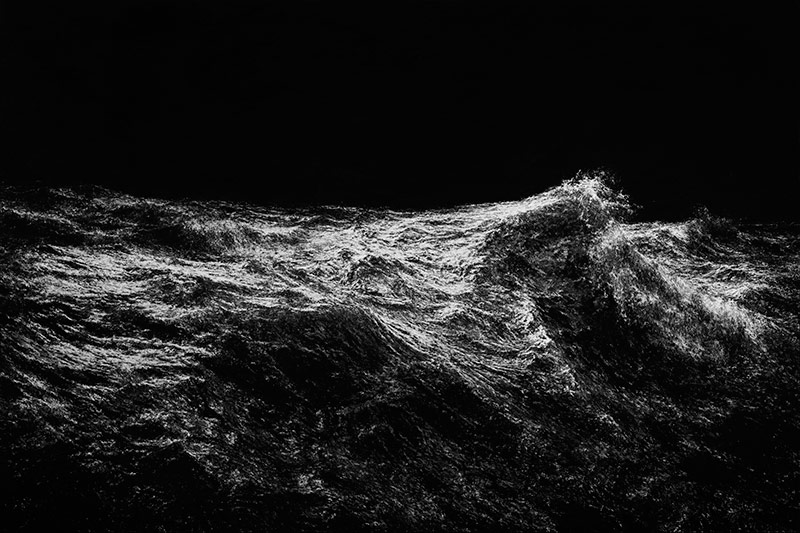
Crash 2017 (Çarpışma 2017), 2018
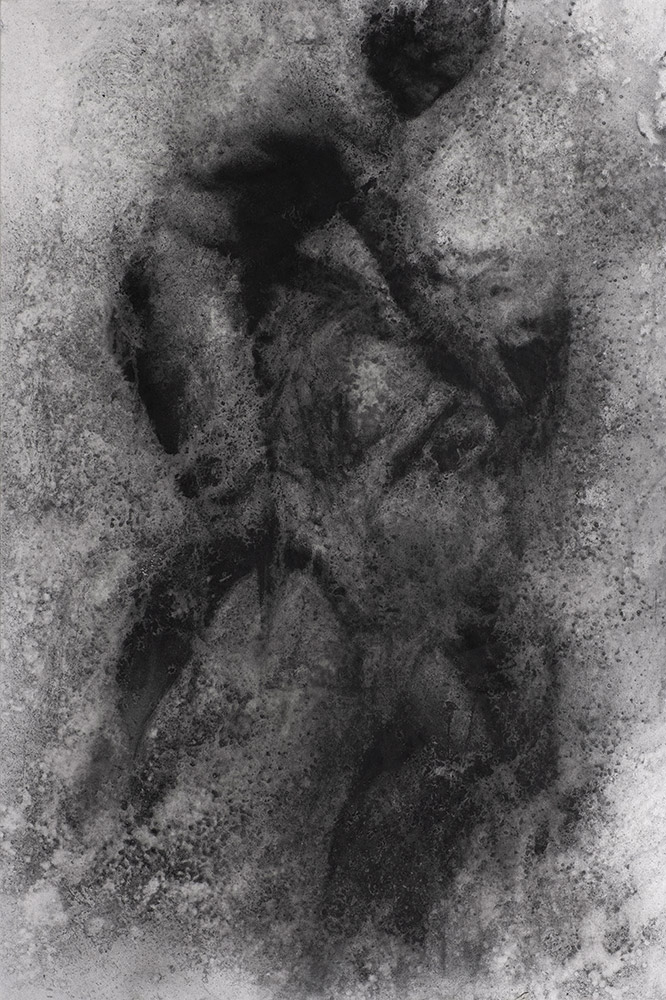
Sel (Deluge), 2020
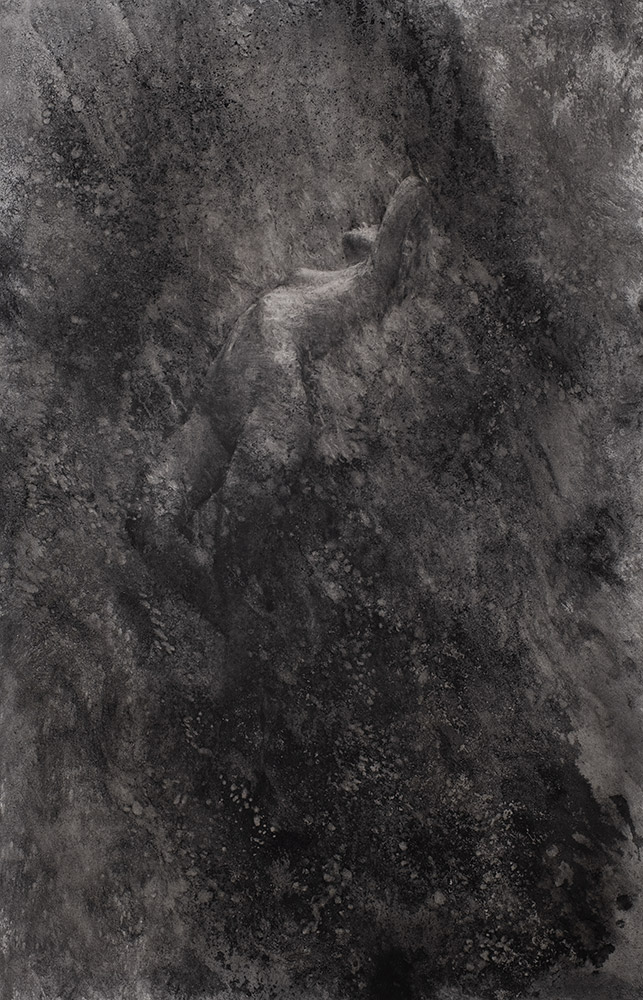
Gün 1, 04 (Day 1, 04)
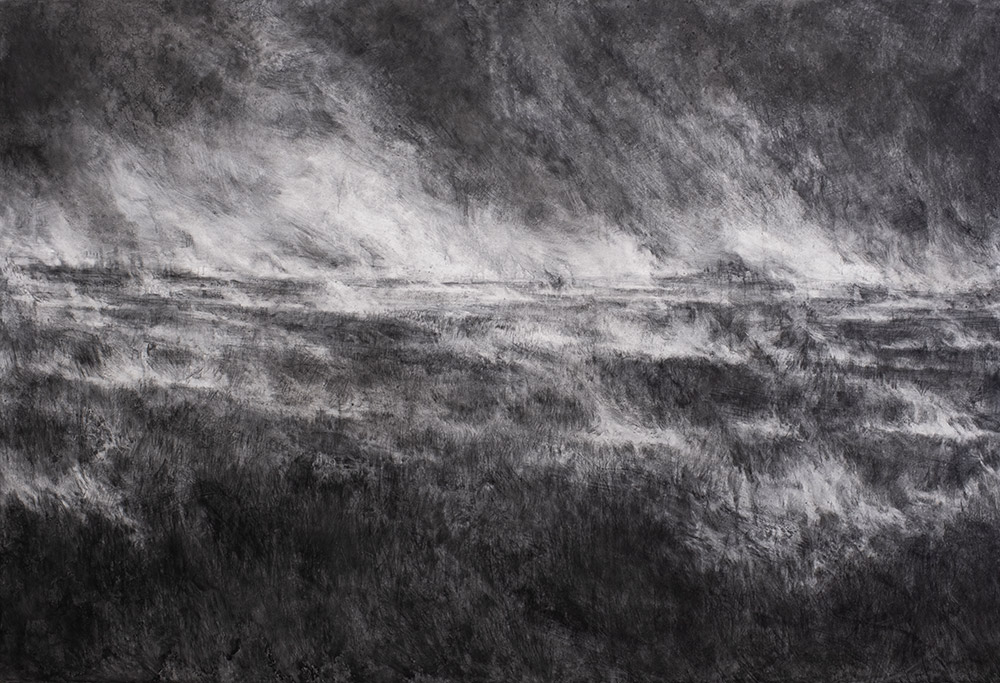
Nadas (Fallow), 2020
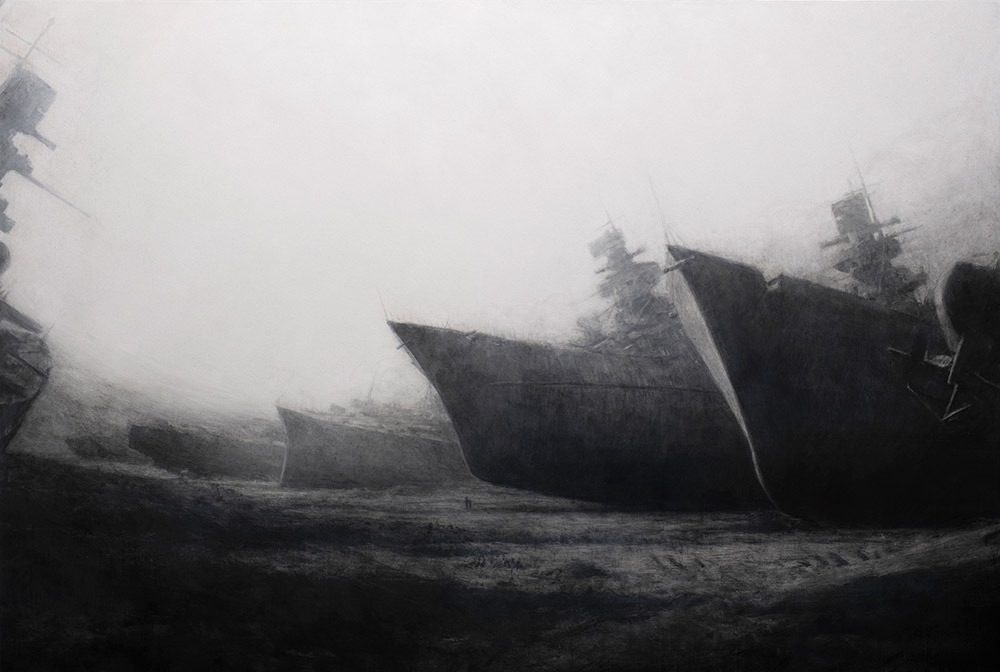
Doğuya Yelken Açacağız (We Will Sail East), 2020
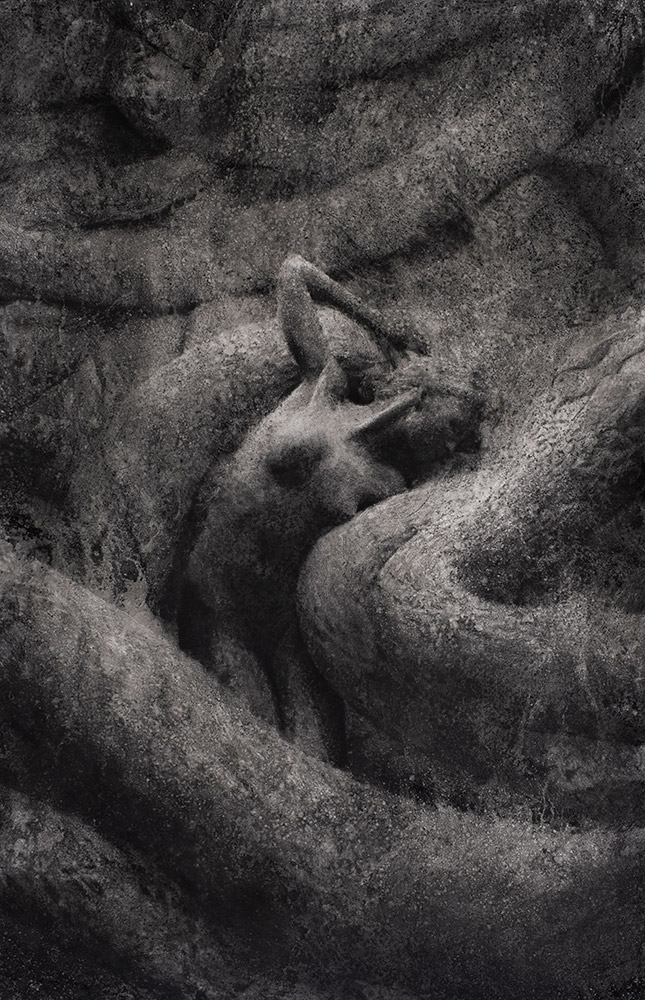
Aydınlık (Bright), 2020
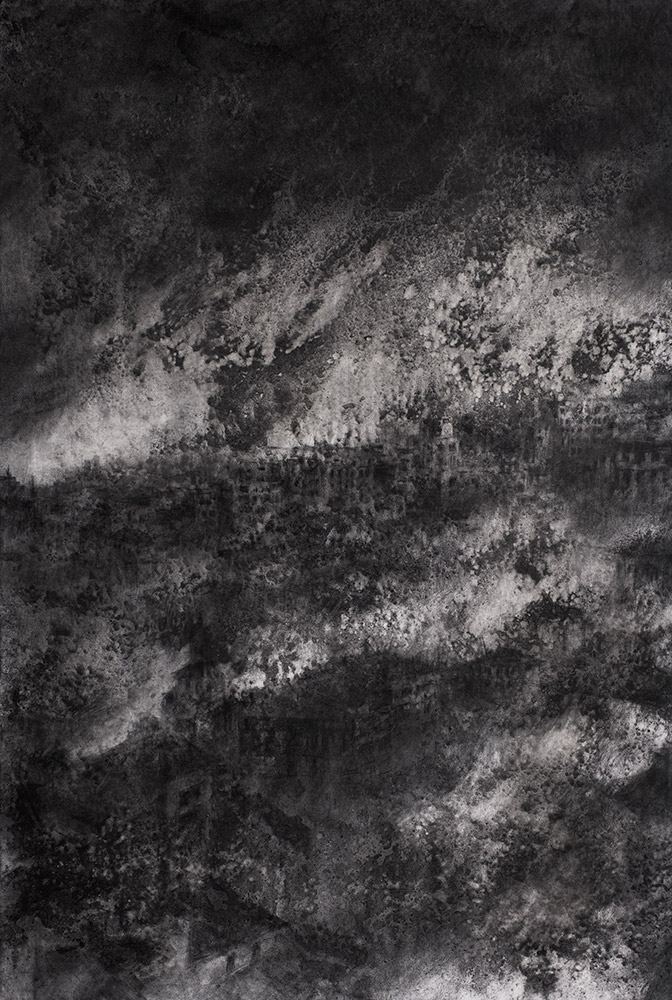
Pera Pera, 2020

Gün 2, 06 (Day 2, 06), 2020
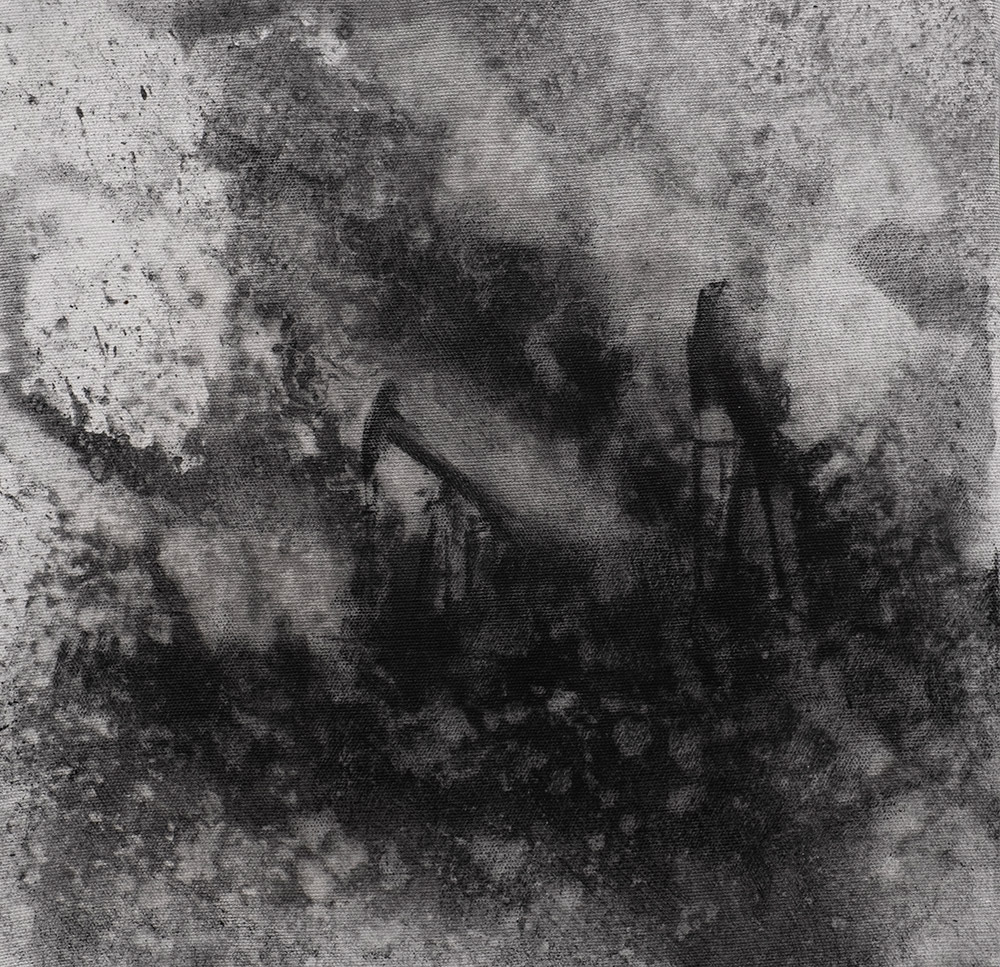
Gün 2, 11 (Day 2, 11), 2020
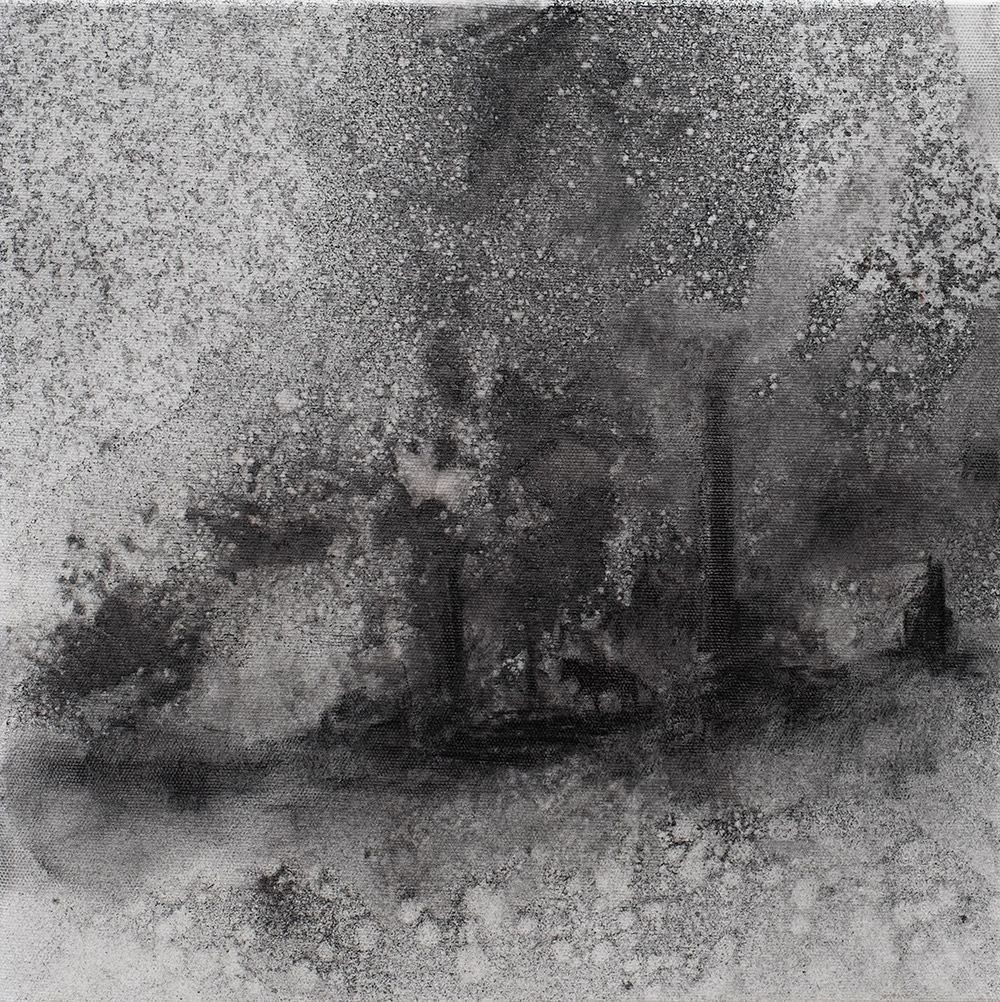
Gün 2, 03 (Day 2, 03), 2020
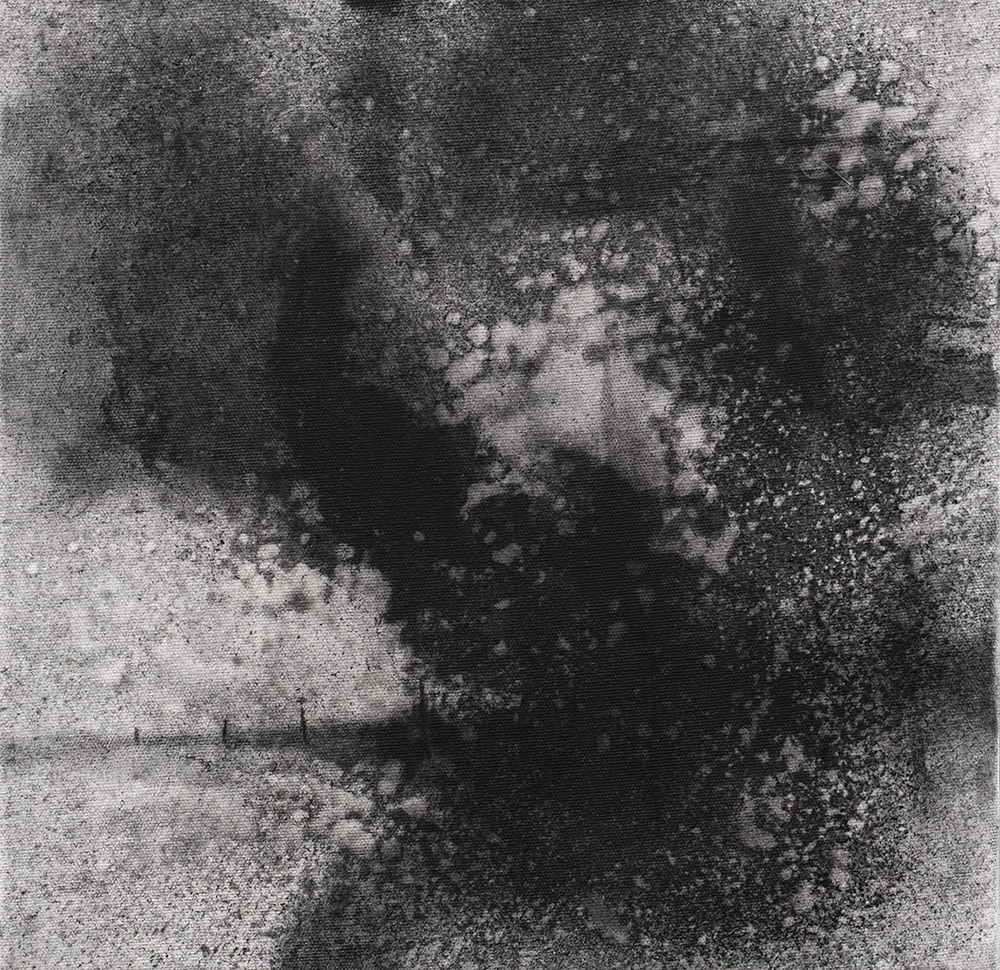
Gün 2, 08 (Day 2, 08), 2020
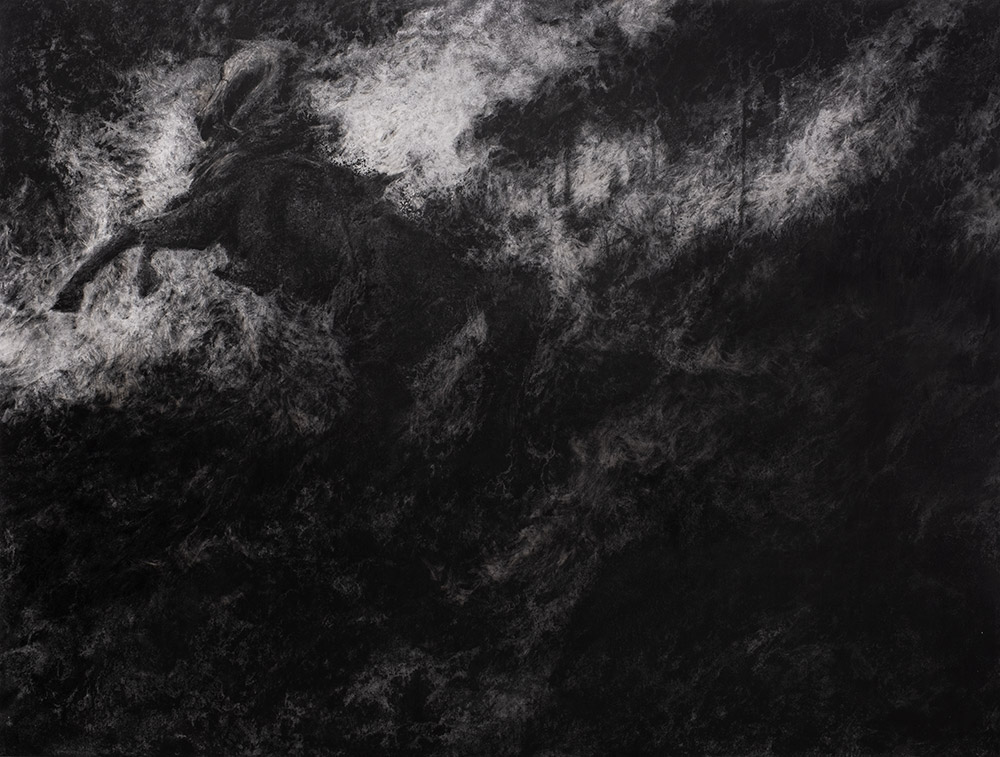
Redd-i Ric'at, 2020
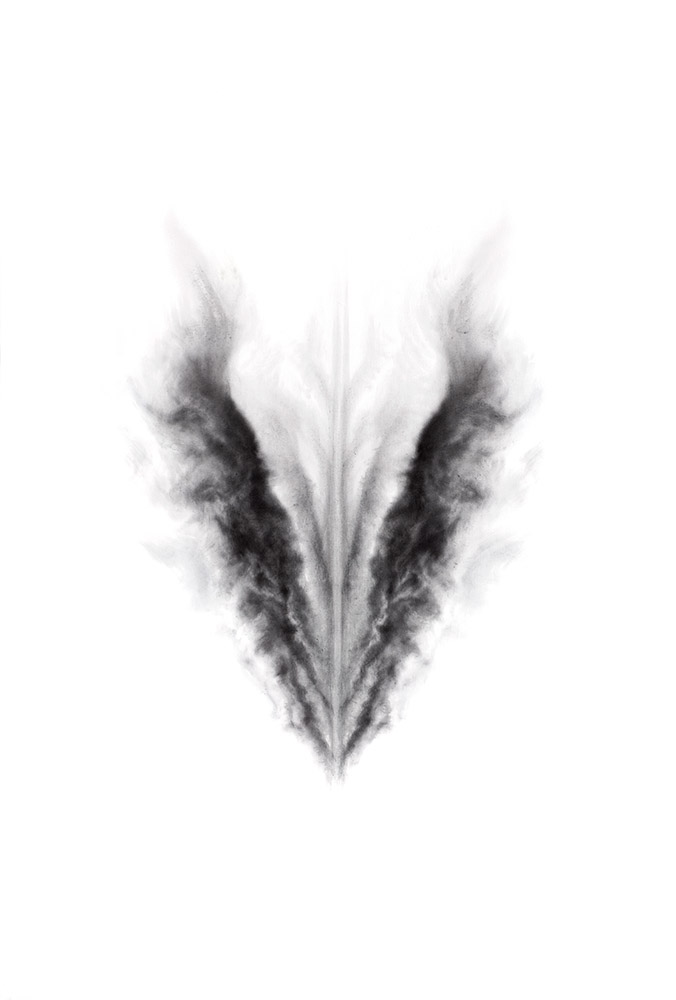
Yanık (Scorched), 2020

Yeni Gün (New Day), 2020
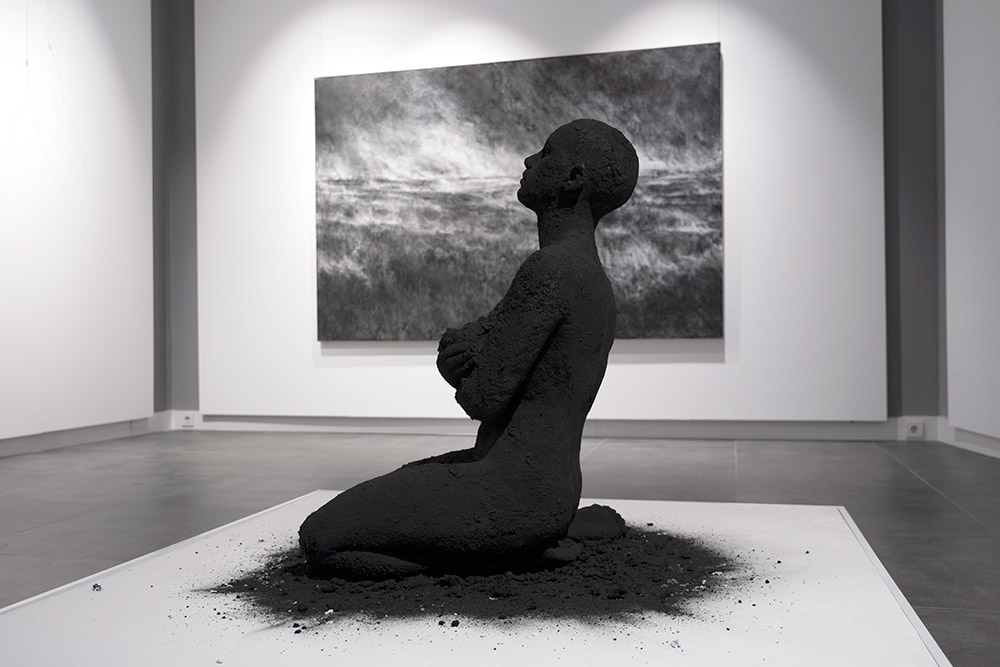
Kül (Ash), 2020
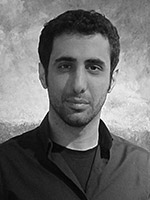
Biography:
Born in 1986, Istanbul, Turkey
2003-2007 Maryland Institute of Art College, Illustration (David Jacob and C.V. Starr scholarships)
2007-2011 Worked as an animatör, designer and illustrator in USA and Bosnia Herzegovina
He currently lives and works in Istanbul.
Selected Solo Exhibitions:
2021 Ash (Kül), Galeri 77, Istanbul, Turkey
2017 Reclamation (Islah), Art Stage Singapore Fair, Singapore
2016 Reclamation (Islah), Mixer, Istanbul, Turkey
2016 Typhon, Art Stage Singapore, Singapore
2014 Chaoskampf, Mixer, Istanbul, Turkey
2013 Grigori, Mixer, Istanbul, Turkey
2012 01 Ante Bellum, Mim Art & Antiques, Istanbul, Turkey
Selected Group Exhibitions:
2020 Virtual Contemporary Istanbul Art Fair, with Galeri 77, Istanbul, Turkey
2020 Step Istanbul, Taksim 360 Project, with Galeri 77, Istanbul, Turkey
2020 Remember Me (Hatırla Beni), Galeri 77, Istanbul, Turkey
2019 Bang Art Innovation Prix 2019, Istanbul, Turkey
2019 Contemporary Istanbul Art Fair, Istanbul, Turkey
2019 Is there life on earth?, Elgiz Museum, Istanbul, Turkey
2018 InterForms, Design Week Turkey, Istanbul, Turkey
2018 Contemporary Istanbul Art Fair, with Mixer / RobbReport / ArtHereIstanbul, Istanbul, Turkey
2018 Art Stage Singapore, with Mixer, Singapore
2017 Contemporary Istanbul Art Fair, with Mixer, Istanbul, Turkey
2016 Stroke Art Fair 2016, Munich, Germany
2016 Contemporary Istanbul Art Fair, with Mixer, Istanbul, Turkey
2015 UİP-6.Boğziçi Zirvesi, Çırağan Palace, Istanbul, Turkey
2015 Things That Count, Things That Don't, New York The Abrazo Interno Gallery, New York, USA
2015 Contemporary Istanbul Art Fair, with Mixer, Istanbul, Turkey
2015 Possibilities and Choices (Olasılıklar ve Tercihler), Mixer, Istanbul, Turkey
2014 MHIE, C.A.M. Gallery, Istanbul, Turkey
2014 Contemporary Istanbul Art Fair, with Mixer, Istanbul, Turkey
2014 Mass Hallucination / Ill Education, C.A.M. Galeri, Istanbul, Turkey
2014 Tomtom Calling!, Tomtom Gardens, Istanbul, Turkey
2013 Contemporary Istanbul Art Fair, with Mixer, Istanbul, Turkey
2013 Mamut Art Project, Antrepo 3 - Karakoy, Istanbul, Turkey
2013 Açık Depo, Mixer, Istanbul, Turkey
2012 Contemporary Istanbul Art Fair, with Mim Art & Antiques, Istanbul, Turkey
2012 Non-aligneds (Bağlantısızlar), Mixer, Istanbul, Turkey
Berkay Bugdan was born in 1986, Istanbul. Studied illustration at Maryland Institute College of Art with full scholarship. Worked in/around animation, film and design for about a decade before turning towards fine art. While focusing primarily on painting, took part in a wide variety of projects spanning yacht design to video game development. Currently set up in Istanbul.
Drawing on themes of transience, chaos and the human footprint, Berkay Bugdan's works incorporate various industrial materials and data analysis techniques with classical painting and sculpture. Bugdan's works are characterized by his use of experimental surfaces and image composing methods that each introduce an aspect of relinquishing control for the artist. Weather by chaotic output from software, uncooperative rectified materials or simple corrosion, the production methods often render the final piece just as much as the artist does. This conflict or balance of the artist’s narrative perspective and unruly techniques define the artist’s unique style.
Reviews:
The Matters of Rising from the Ashes or Remaining in Dark Eternity
Although we wish for order, linearity, and stability in our natural, cultural, and social environments, we know that life is shaped by entropy. Unforeseen and unstructured change is often evaluated as chaos. It frightens us, as it exposes how fragile we are in our micro and macro habitats.
Modern man tried to shield himself from the force of permanent change and destruction with rationalism, logic, and science. Mankind came to the conclusion that reality is that what can be scientifically measured. Man categorized and classified the world in usefulness and uselessness as well as in harmlessness and dangerousness. Infinite libraries tell the story of how we tried to overcome nature in order to surpass the limits of time and space. And indeed, we have come rather far in our quest to erupt from nature and to shape the world according to our needs and wants. Though, at what cost? And are we really successful?
The disastrous state of the current world underlines that we must reconsider our philosophy of the Ultra Maxime, which is globally based on excessive consumerism, wild capitalism, dangerous militarism, and political right-wing conservatism. I believe that at least every now and then, we should stop for a moment, interrupt our daily rushes between endless appointments to question the reasons for all the running and hasting. What are we longing for? Is it something inside or outside of us? Is it spiritual, intellectual, or materialistic? The devil loves to ask for what it really is that we desire? What is it that we need? What do we want, and how much is enough?
I will not argue here what someone should need or want, or what anybody should strive for in life. Nobody is in the position to give anybody the insight in the absolute and universal truth about such matters of course. Also, as such a discussion ultimately leads to psychology as well as to philosophy, to anthropology and to esoteric science, this catalogue text is not the right place for such an inquiry. Nevertheless, the above discussed questions remain important for us as Berkay Buğdan’s current exhibition Ash (Kül) at Galeri 77 is dealing with the ideas of entropy, transformation, and the force of the 2nd Law which indicates that everything faces dissolution due to the forces of change and time.
The artist exposes the finality of our existence as well as the time-based limitation of the things we create. His works stress that our machines, buildings, artefacts, and artworks do not last forever. At the same time, the artist underlines that the finality of organic and inorganic life makes them more intimate and precious. Indeed, without death and decay, there would be no new creation. Without permanent change and transformation, there would be no progress and development. These forces spin the circle of life, which like a motor of absolute creation provides the power that nurtures and cultivates all life on earth.
The limitation and finality of all things forms the core of the exhibition’s conceptual framework. As entropy and permanent change shape the world, chaos becomes its main character, and the ultimate dissolution of everything and everyone is its inevitable outcome. Like plastic, concrete, organic materials, everything has an expiration date, after which the material will lose its stability, color and form for finally end its being in the display of its rudimentary elements.
Nevertheless, the human mind longs for an everlasting world, in which everything stays as it is. In an ideal world, no sickness, no death, no misery, no change and no finality of things is given. Though, this can only be an idea, a utopia that comforts us. Though, looking at our concrete world, we realize that quite the opposite is given. Maybe this is the reason why we use the term dystopia instead of utopia so much these days.
In Berkay Buğdan’s exhibition, the fragility of human civilization and its impact on our mind and consciousness is revealed through one central sculpture, which is surrounded by numerous charcoal drawings on canvas.
His use of unprocessed charcoal for creating his works goes beyond sole formal meaning. As coal is the result of an ancient botanical decay process, the artist holds history in his hands while he creates the drawings. As a representation of transformation, charcoal has a special meaning for Buğdan. Charcoal is more than a simple drawing tool for him. It is the manifestation of finality, change and transformation.
Also, its formal structure and materialistic characteristics have both formal and conceptual meaning in his exhibition. Charcoal is fragile. As artistic material it must be fixated. Otherwise, it can be swapped away by accident or be blown away by the wind. It is highly vulnerable against time and change. So, the material shows strong parallels to the conceptual framework of Ash (Kül).
In the end, besides the formal fragility, and the references to never-ending transformation, the aesthetic quality of charcoal is of great importance for the artist. With charcoal, you can draw lines of various thickness as well as intensity. At the same time, like pastel sticks, you can achieve a painting like quality which goes beyond the line structure of the drawing for giving the artist the possibility to formulate fields of different textures and structures.
Charcoal has no color. It is black! This is the reason why the chosen material points to the transformation of time in the context of natural decay. The plants and natural elements that once existed have lost their original form and color. They have become coal. Once being equipped with elaborated forms and exquisite colors, now, in the charcoal stick, they are reduced to simple geometrical black sticks. Though, and here comes another transformational force, in the hands of Berkay Buğdan, they become instruments that cause new forms and new meanings on the canvases. The coal particles become human figures, parts of a cityscape, waves of the sea, or birds in the sky.
Color never returns. The black of the charcoal underlines the constructiveness of the artworks. Although being figurative, they never become realistic. The compositions resemble dream-like memories of a distant past. Memories are always blurred constructions of the mind that shift between truth and false, reality and fiction as well as objectivism and subjectivism. Memories are lies that we tell us to convince us of a truth that we long for, a truth that fits our wishes. This is the reason, why the deep black of the charcoal corresponds to the conceptual framework of the exhibition. Sometimes used to present sharp and definite forms, sometimes used for creating blurred fields of smoky areas, the charcoal adds a mysterious atmosphere to the works. The depicted forms are shivering and standing at the threshold between existence and dissolution. Being positioned at the edges of blurred fields, they always face the risk of extinction and final dissolution. The black of the charcoal exposes infinite and unknown darkness, which stands at the end of every organic and inorganic existence.
In the exhibition, a sculpture of a female figure that holds a baby is central. She and her baby are covered in charcoal and so have lost any individual details like skin color, eye color, hair color etc. They appear as shadows that remind the spectator of the humans they once were. This gives the sculpture a haunting atmosphere. Like a ghost, the figure stares ahead into the black nothingness of time and space. No facial expression gives an insight in what she is thinking or feeling. The facial mask that once gave her an individual persona appears as lifeless and frozen. At the same time, the simple posture, the lack of personality and the neutral bodily expression turns this sculpture into a universal symbol of man facing dystopia.
Looking at the sculpture, it is hard to understand her state of mind. Neither do we know where she lives or where she came from. Though when lifting our heads, we discover glimpses into her world. It is not our world too? The images look familiar. We see powerful and rousing seascapes, as well as skylines with birds flying through. The sky and the sea, two powerful universal images frame the other sceneries presented in Ash (Kül). Fragments of cities, and parts of dissolved harbors point to the destruction of civilization.
No humans can be seen. The cities are emptied, and the ships do not travel anywhere. There is nowhere to go to and nowhere to live in. The perfect storm and the ultimate apocalypse have created the absolute dystopia.
Ash (Kül) critically comments on the concrete situation of our world. In the center of the exhibition sits the figure on a timeless and spaceless ground. She still looks ahead though. Holding the baby as a symbol of a new beginning in the circle of life, some exhibition visitors may assume that there is still hope for mankind while others might consider the two already being dead. It is up the spectator to decide whether there is hope or not. Will they rise from the ashes or will they remain in black eternity? The answer is up to us, as well as the future of our planet and civilization lay in our hands.
Prof. Dr. Marcus Graf, 2020
Art Writer, Curator,
Head of the Art and Cultural Management Department at Yeditepe University’s Fine Art Faculty, Istanbul
***
The artist uses “rust" as a part of his technique and material, which is a material that symbolizes a sense of transformation as well as decay or destruction. One can trace the analogy in the artist’s steel paintings, as well as his other works where artist pauses the destruction or the construction in each piece at different rates that creates a sense of motion throughout the exhibition. For example the sculptures each have their own devolution processes, depicting various states of existence, and the reclamation of order is dominated by the cycle of chaos and its temporality.
The works linger in the line of being, yet-to-be, or used to be – all these perceptions remain slightly overlapping each other. Chaos, which has been a primary subject for the artist, taking on a more mature perspective, focuses on the rebirthing part of chaos. Time becomes crucial and the process stands out. We experience a state of existence, rather than viewing.
In his new works, existential data is once again compiled and synthesized meticulously; and references to all perceptions such as touching or hearing are apparent. For instance, the first interactive work produced by the artist is in the form of an instrument-sculpture. It emphasizes on one of the most prominent factors in his works, which is transience. Actually, this interactive sculpture can be interpreted as a plant or a tree, like the sounds trees make, the sounds that appear from their sole existence and disperse through interaction with air. Similar to that, the lifespan of the sound waves dispersed from the sculpture that compiles feedback from the participants and the venue itself are observably short, underlining the temporality aspect further. This perspective also surfaces the temporary sense of aesthetics. The sound waves represent the temporality of everything created by the humankind in relation to the cosmic timeline, in which, all vanishes. This emphasis on temporality enables a similar feeling to the awe and the peculiar admiration one feels when one encounters a forest fire. With the same parallel feeling, almost an admiration of entropy, we are reminded of reclamation through deconstruction and recreation, where temporariness is what life consists of, the very state of transience itself.
“qualis eram”, translating to “used to be”, is the name of the first sculpture work exhibited by the artist. The sculpture aesthetically resembles the ‘living stones’ in the Greek period, but it is created as an engineering wonder. The sculpture has quite an artificial sense of beauty. The artist destroys some parts of the sculpture in the production process. By doing that, he aims to investigate this artificial sense of beauty by restricting the sculpture itself within the aesthetics lifespan.
Buğdan explains the state of conditional existence in his works by saying; “Temporariness of everything makes it more prominent”, “if everything is temporary, there is only one thing that is permanent: ‘the moment’ and what we create from it.” We can find themes of destruction and transformation in the way he transforms the materials in his works, and even a kind of perceptual transition in ourselves, as the spectators. The reason why the works evoke such a feeling of deep and natural admiration is maybe because they reveal the delicate negotiations of ‘existence’ rather than strengthening sole aesthetic creation. The exhibition is more of an existential consensus as it erases and rewrites the traces of being, witnessing the balance between the dark (non-living) and the light (living), what is and what is not…
Selin Turam
From the “Reclamation” exhibition catalogue, Mixer, 2016


